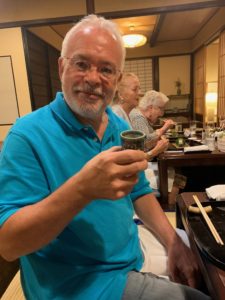
Wanna get tangled up and confused? Jump inside my mind. After twenty-five years of studying Japan’s divinities and demons, only now do I realize I’m in over my head. Japanese religious studies is not just Japanese. It is the study of Hinduism, Taoism, Confucianism, yin-yang theories, zodiac cosmology, star worship, mountain asceticism, shamanism, nature cults, animism, and more. All these ingredients got blended together in Japan – they are still being mixed together into an endearing and powerful cocktail, and I’m drunk on it. Japanese religious studies is excitingly confusing, complex, and syncretic.
These days, I’ve started to focus on Japan’s hybrid, multifaced, and ever-changing deities. It has opened a new door into confusion and complexity. The intricately interlaced Buddhist-Hindu-Kami matrix is akin to the primordial soup, and even today it keeps spinning around and turning out even more recipes. After nearly a quarter century learning the names of the gods, their functions, and their mythologies, I’ve only just begun to zero in on the “Japanization” of foreign gods, the “domestication” and “cutification” of these imported deities, and the commercialization of most religious icons.
Another new area of great interest to me involves the “modernization” of Japan’s gods. Below is the ABSTRACT from a lecture I recently presented (Oct. 2019) at Aoyama Gakuin University in Tokyo:
THE PANTHEON OF GODS in Japan continues to grow in modern times, just as it did in bygone centuries. In the last five decades, Japan’s religious institutions and religious-goods industry have devised new roles and new iconography for age-old Buddhist divinities. Some of the newer forms are derived from older manifestations, but some are entirely new. This lecture focuses on two of Japan’s most beloved saviors – Jizō and Kannon – and the new “modern” roles they play in memorial services for miscarried, stillborn and aborted children; in staving off dementia in the elderly; in granting sudden and painless death to senior citizens who don’t want to burden their families or don’t want to die from a long unpleasant illness; and in providing dedicatory services for deceased pets. The central concern of these new roles is death. This aligns well with the economic base of Japanese Buddhism, which for centuries has revolved around the provision of mortuary services. More and more temples are catering to modern social concerns. By introducing old gods in new formats to address changing social needs, funerary Buddhism has remained an integral part of Japan’s contemporary religious landscape.
Another focus of my research is to highlight the accelerating speed at which Japan is domesticating and cutifiying its myriad deities and ritualistic landscape. Commercial sales of religious goods by the secular retail sector are also expanding into all new product lines at accelerating speed. For more on this research, see:
NEW DUTIES FOR OLD DEITIES.
THE EVER-CHANGING FACE OF JAPAN’S RELIGIOUS LANDSCAPE.
DOMESTICATION, CUTIFICATION, & COMMERCIALIZATION OF RELIGIOUS ICONS
The message seems clear — adapt to the times, address changing spiritual needs, remain relevant as society changes. Otherwise get swept into the historical dustbin.
QUICK RESUME FOR MARK SCHUMACHER
Schumacher is a longtime Japan resident based in Kamakura. He works out of his home. For nearly three decades, he was a writer, editor, PC consultant, and translator (J-E) for major corporations in the US, Japan, Taiwan, and elsewhere. Since 1995 he has served as webmaster, writer/designer, and consultant for numerous Internet companies (both Japanese and foreign). Today he is an independent scholar of Japanese Buddhist statuary, and author of the popular A-to-Z Photo Dictionary of Japan’s Buddhist & Shinto Deities (online since 1995). He holds seminars on Buddhist art topics and serves as an art historian, researcher, and appraiser for various museums, scholars, collectors, and art associations. He is also the president of Sake Connections, a Japan-based exporter of premium Japanese sake, and in his spare time runs a small firm exporting modern Buddhist statuary.
Japan Times interview with Schumacher.
Videos with Schumacher.
A-to-Z Photo Dictionary of Japanese Religious Icons.

Mark Schumacher turned sixty years old in 2019. In this photo he is shown wearing a red-colored cap and vest known as Chan-Chan-Ko ちゃんちゃんこ, which signifies his rebirth, his “second infancy,” his Kanreki 還暦 birthday (kan = return, reki = calendar). The traditional Japanese calendar was based on the Chinese Zodiac calendar, which was organized into 60-year cycles. The cycle of life returns to its starting point in 60 years, and as such, kanreki celebrates that point in one’s life when one’s personal calendar returns to the calendar sign under which one was born. Traditionally, friends and relatives are invited for a celebratory feast on one’s 60th birthday. It is customary for the celebrant to be given a red cap and wear a red vest. These clothes are usually worn by babies and thus symbolize the celebrant’s return to his/her birth. MY ZODIAC SIGN. I am a bore! Actually, I am a zodiac BOAR. The Buddhist patron of boars is Amida Buddha. And the Big Buddha of Kamakura is Amida. Talk about winning the ovarian lottery.
